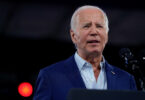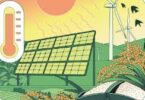Zaid M. Belbagi
The Gulf states that are concerned with economic transformation are beginning to focus on diversification, with the development of robust infrastructure for renewable energy. As urban developments and populations expand across the Gulf region, the demand for electricity is growing rapidly and the region is predicted to need another 100 gigawatts of power over the next decade to meet this demand. Moreover, several avenues of economic diversification, such as artificial intelligence, smart cities and tourist attractions, are electricity-intensive, further adding to the need for sufficient and sustainable energy sources.
At the same time, as the number of residents increases in a region that faces high temperatures for most of the year, the increased demand for air conditioning will also put new pressures on electricity generation. Renewable energy is key to meeting this growing demand and, as per the International Energy Agency, will meet 35 percent of global power generation by 2025.
This region has shown a positive trend in this domain, as the Gulf states have actively established cross-border, regional and international cooperation to develop renewable energy infrastructure. On May 1, for example, the UAE’s state-owned renewable energy company Masdar established a partnership agreement with Bahrain’s energy and investment arm Bapco Energies to develop near-shore and offshore wind farms in Bahrain.
In the same week, Oman’s green hydrogen company Hydrom signed agreements worth $11 billion with international companies, including France’s state-owned EDF. These will lead to the establishment of two new green hydrogen projects in Dhofar. Simultaneously, the Kuwait Oil Company signed a memorandum of understanding with the Kuwaiti Ministry of Electricity, Water and Renewable Energy to coordinate efforts to generate 1 GW of electricity from solar energy.
With abundant exposure to sunlight and wind and large tracts of unused land, the Gulf states are well positioned to leverage natural resources for sustainable energy. High sunlight exposure allows solar plants to operate for longer durations. It is worth noting that, in the Gulf Cooperation Council, solar photovoltaic power now costs less than 2 cents per kilowatt-hour to generate and is therefore the cheapest option for power generation.
Boosting renewable energy generation is also part of the Gulf states’ commitment to reduce carbon emissions and hit their net-zero targets. Through their participation in notable international environmental summits such as the UN Framework Convention for Climate Change’s Conference of the Parties gatherings, Saudi Arabia, Bahrain, Kuwait and the UAE have committed to net-zero emissions by 2050. Further, having ratified the Paris Agreement and acknowledged their heavy reliance on fossil fuels, the Gulf states have actively put in place the necessary infrastructure and plans to reduce emissions.
This commitment is also reflected in the states’ national vision statements. As part of its Vision 2030, Saudi Arabia is working toward energy diversification and a circular carbon economy wherein, by 2030, renewable sources will provide 50 percent of the Kingdom’s energy needs. Saudi Arabia’s total installed renewable energy capacity tripled in 2023 and it continues to make significant investments in solar and wind projects. Similarly, the UAE’s Energy Strategy 2050 aims to make the country carbon-neutral by 2050.
Beyond the benefits of energy security and sustainability at home, their commitment to renewable energy has also allowed the Gulf states to boost international relations, as well as attract and provide foreign investment. In the first week of May alone, Saudi Arabia signed renewable energy partnerships with Azerbaijan, Mauritania and Uzbekistan. Notably, the Kingdom is also in talks with the EU to identify avenues for cooperation on renewable energy and carbon capture. It also hosted the Saudi Arabia Green Energy Week in March, when local and international industry leaders gathered to discuss the opportunities and challenges for the energy value chain.
The region is therefore on track to build a robust and sustainable infrastructure for renewable energy that can not only meet domestic demand but also potentially support international consumption. State-owned companies have been active in providing the necessary financial and regulatory support to this endeavor and, while the private sector has also played a role, there continues to be scope for further private-public partnerships. For instance, as per the UAE’s Nationally Determined Contributions under the Paris Agreement, the country needs investments totaling approximately $36 billion to achieve its climate targets by 2030.
Today, renewable energy is not just an option but a necessity to enhance the socioeconomic transformations underway in the Gulf. It adds sustainability to economic development, allows significant opportunities for employment and skills development and increases international investor confidence in the region.







